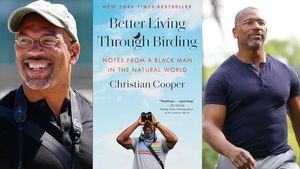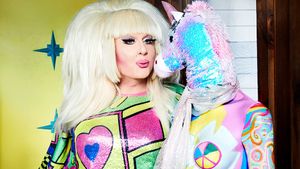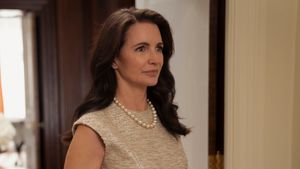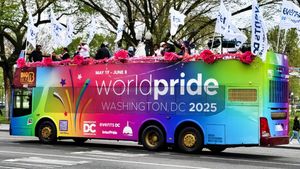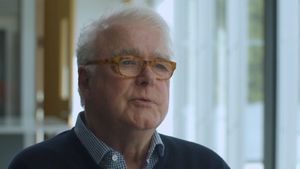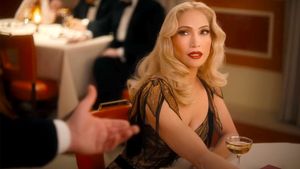Who she was: A pioneering journalist and friend, mentor, and most likely lover of Eleanor Roosevelt.
What she accomplished: Today, Lorena Hickok (1893-1968) is often mentioned primarily for her relationship with First Lady Eleanor Roosevelt, and that was certainly an important aspect of her life, but “Hick” also had a distinguished career in journalism and broke through many barriers for women in the profession.
Born in East Troy, Wis., Hickok endured a difficult childhood; her father was physically abusive and couldn’t keep a job, so the family moved around a great deal. At 14, Hickok left home and began working as a maid, but this life was no more settled, as she lived with nine different families in two years. She finally found a measure of stability by moving in with her mother’s cousin Ella Ellis. This enabled the young Hickok to finish high school, then go to college, but she was unhappy in academia and flunked out after a year. She then found her calling, taking a job with a small-town newspaper.
Hickok soon moved on to a larger city and a larger paper, the Milwaukee Sentinel. She was initially society editor, one of the few positions open to women journalists at the time. She became bored with this assignment, so she fought, successfully, for the chance to cover hard news, and she distinguished herself in this arena. She then worked for papers in Minneapolis, New York City, and Minneapolis again, really hitting her stride in her second stint with the Minneapolis Tribune, where she reported on such traditionally male preserves as sports and politics. In 1928 she joined the Associated Press. “Quickly making a name for herself by covering politics and dramatic stories like the Lindbergh baby kidnapping, Hickok surpassed her male colleagues and won the coveted right to have her name appear as a by-line atop her articles,” notes a biographical sketch published online by the Eleanor Roosevelt Papers Project at George Washington University. Hickok became the most famous woman journalist of her time.
In 1932 came her pivotal meeting with Eleanor Roosevelt, as the AP assigned her to cover Mrs. Roosevelt during her husband’s run for president. The two women became so close that in 1933, Hickok quit the AP because she felt she could no longer be objective about the Roosevelts. After Franklin D. Roosevelt became president, Hickok took a job with the federal government, traveling to communities around the nation so she could research and report on the conditions in which Americans lived during the Great Depression. In 1940, Hickok became executive secretary of the Democratic National Committee and moved into the White House at the first lady’s invitation.
Hickok influenced Eleanor Roosevelt’s political work; she encouraged the first lady to address the working and living conditions of coal miners and to begin writing a syndicated newspaper column, “My Day,” which Hickok edited. Some historians characterize the women as devoted friends, but others say unequivocally that they were in love. “I think that Hick was in love with Eleanor, and Eleanor was in love with Hick,” said Blanche Wiesen Cook, author of a multivolume biography of Eleanor Roosevelt, in a 1999 PBS interview. The many ardent letters the women exchanged, she said, are “love letters, but they’re politically driven. And their relationship is a very full relationship. I think this is one of the most important friendships and relationships of Eleanor Roosevelt’s life, certainly at this time.” As to whether the relationship was sexual, Cook said, “Well, the fact is, we can never know what people do in the privacy of their own rooms. The door is closed. The blinds are drawn. We don’t know. I leave it up to the reader. But there's no doubt in my mind that they loved each other, and this was an ardent, loving relationship between two adult women.”
“It’s also a very stormy and troubled relationship,” Cook added, complicated by “the fact that Hick gives up her career for the woman she loves. And as we all know, one should never give up one’s career for the man or woman one loves. It makes you an unhappy, dependent person, and it changes the ground you walk on.” Nonetheless, the women remained close for the rest of their lives. After Hickok left the DNC due to ill health, Eleanor helped her get a job with the New York State Democratic Committee. In her later years, Hickok lived near Eleanor in Hyde Park, N.Y. The women collaborated on a book about women in politics, Women of Courage, and Hickok also wrote a biography of Mrs. Roosevelt. The former first lady died in 1962, Hickok in 1968.
Hickok and her relationship with Eleanor Roosevelt are the subject of a new one-woman play. Hick: A Love Story: The Romance of Lorena Hickok and Eleanor Roosevelt opens tonight at the Eureka Theatre in San Francisco. Terry Baum, who portrays Hickok, wrote the play with Pat Bond, drawing on Hickok’s writings and Roosevelt’s passionate letters to her. The play, a coproduction of the Crackpot Crones and Theatre Rhinoceros, is scheduled to run for 12 performances only, Thursdays through Sundays, through July 27. Admission is free, but reservations are suggested; go here to find out more about the show and reserve a ticket, and watch a trailer at the end of this story. Also, Baum will give a talk, “Lorena Hickok: Butch Dyke, Renowned Journalist & Eleanor Roosevelt’s Lover,” Tuesday from 7 to 9 p.m. at the GLBT History Museum in San Francisco. More info here.
Choice quote: “I’ve been trying to bring back your face — to remember just how you look. Funny how even the dearest face will fade away in time. Most clearly I remember your eyes, with a kind of teasing smile in them, and the feeling of that soft spot just north-east of the corner of your mouth against my lips.” — Hickok in a 1933 letter to Eleanor Roosevelt
For more information: Hickok figures prominently in the second volume of Cook’s Roosevelt biography, Eleanor Roosevelt: Volume 2, The Defining Years, 1933-1938, after getting some mention in the first, Eleanor Roosevelt: Volume 1, 1883-1933, which won a Lambda Literary Award. Cook is still working on the third volume, which undoubtedly will include more about the women’s relationship. Hickok also features in Doris Kearns Goodwin’s Pulitzer-winning No Ordinary Time: Franklin and Eleanor Roosevelt: The Home Front in World War II. Doris Faber’s The Life of Lorena Hickok: E.R's Friend, published in 1980, is cagey about the nature of Hickok’s relationship with Eleanor but does quote from their love letters. About 300 of those letters are collected and annotated in Empty Without You: The Intimate Letters of Eleanor Roosevelt and Lorena Hickok, edited by Rodger Streitmatter. And we’re curious to see what Ken Burns’s newest documentary series, The Roosevelts: An Intimate History, which will air this fall on PBS, will have to say about Hick.












































